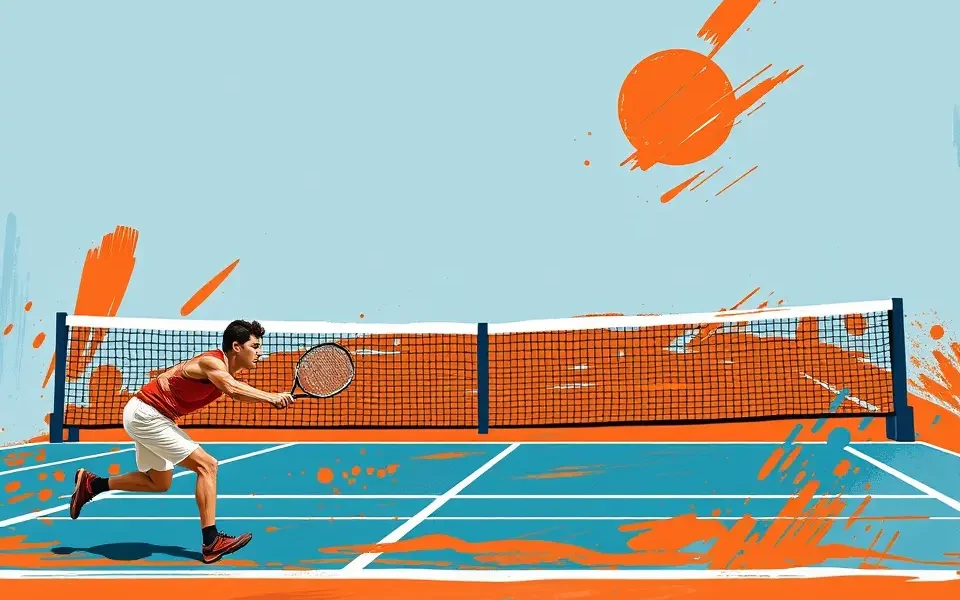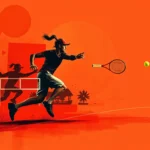Stefanos Tsitsipas, a prominent figure in the world of tennis, has often spoken about his affinity for clay courts. But what is it about this surface that allows him to truly “impose” his game? This article explores the various facets of Tsitsipas’s game that make him a formidable opponent on clay, delving into the tactical, technical, and even psychological advantages he gains from playing on this unique surface.
The Allure of Clay: A Canvas for Tsitsipas’s Strengths
Holding a career record of 103 wins and 31 losses on clay, Tsitsipas clearly thrives on the red dirt. While he is an accomplished all-court player, his best results have consistently come on clay. This might seem surprising for a player whose game is built around a powerful serve and forehand. However, a closer look reveals why clay is such a “happy hunting ground” for the Greek star.
Time and Space: The Clay Court Advantage
One of the primary reasons Tsitsipas excels on clay is the extra time the surface provides. Clay courts are slower than hard courts or grass, allowing players more time to react and prepare their shots. For Tsitsipas, this extra time is crucial, especially on his return of serve.
- Improved Return: Tsitsipas himself acknowledges that the added bounce and time on clay helps him to open up the court. Clay gives him more time to hit a good return, which has been considered a weaker part of his game. This allows him to neutralize opponents’ serves and get into rallies, where he can then dictate play.
- Protecting the Backhand: The slower pace of clay also gives Tsitsipas more opportunities to protect his one-handed backhand. He can position himself strategically to avoid being caught out on that side, buying himself time to either slice the ball defensively or, ideally, run around it to unleash his powerful forehand.
The Topspin King: Height and Rotation
Tsitsipas’s forehand is one of his biggest weapons, and clay courts accentuate its effectiveness. He generates significant topspin, which makes the ball bounce high and deep, pushing opponents behind the baseline and opening up the court for him.
- High Bounce Advantage: Clay courts tend to produce a higher bounce, which suits Tsitsipas’s game perfectly. The high bounce allows him to get more reward on his serve. He is able to spin the ball up above his opponent’s strike zone.
- Opening the Court: The topspin not only makes the ball bounce high but also allows Tsitsipas to create sharp angles and open up the court. This gives him more opportunities to come into the net, where he can use his athleticism and volleying skills to finish points.
Tactical Versatility: A Chess Match on Clay
Clay-court tennis is often described as a more tactical game than other surfaces. The slower pace and higher bounce encourage players to construct points carefully, using a variety of shots and strategies. Tsitsipas excels in this environment due to his versatility and ability to adapt to different situations.
- Endurance and Patience: Tsitsipas recognizes that endurance is a key element of clay-court tennis. The longer rallies and physically demanding nature of the surface require players to be in top condition and possess the mental fortitude to grind out tough points.
- Strategic Point Construction: Clay gives you time to really structure your point, give it some shape, give it some thought. He can slow down and take a bit of extra time, choosing when to attack and when to defend, adding a different element to the game.
Minimizing Weaknesses: The Backhand Conundrum
One-handed backhands have traditionally been considered a weakness on clay, as opponents can exploit the high bounce to attack that side. However, Tsitsipas has found ways to mitigate this disadvantage and even turn it into an advantage.
- Pushing Opponents Back: Tsitsipas prefers to stay deep in the court to lift his one-handed backhand high over the net to make it land deep on the other side. Some players prefer to step in and rip backhands. That’s not how the Greek goes about his business. He uses his backhand more to push opponents back and get the ball out of their strike zone.
- Running Around the Backhand: With the extra time afforded by clay, Tsitsipas can often run around his backhand to hit a forehand, his stronger shot.
Beyond Technique: The Mental Edge
In addition to the technical and tactical advantages, Tsitsipas also seems to benefit from a psychological edge on clay. He grew up playing on this surface, and he feels a deep connection to it. This familiarity and comfort level can translate into greater confidence and a more positive mindset.
A Surface to Impose
Tsitsipas’s success on clay is no accident. It’s a result of his hard work, dedication, and a deep understanding of how to maximize his strengths on this surface. As he continues to evolve his game and refine his clay-court strategy, he is poised to achieve even greater success on the red dirt in the years to come.








No Comment! Be the first one.